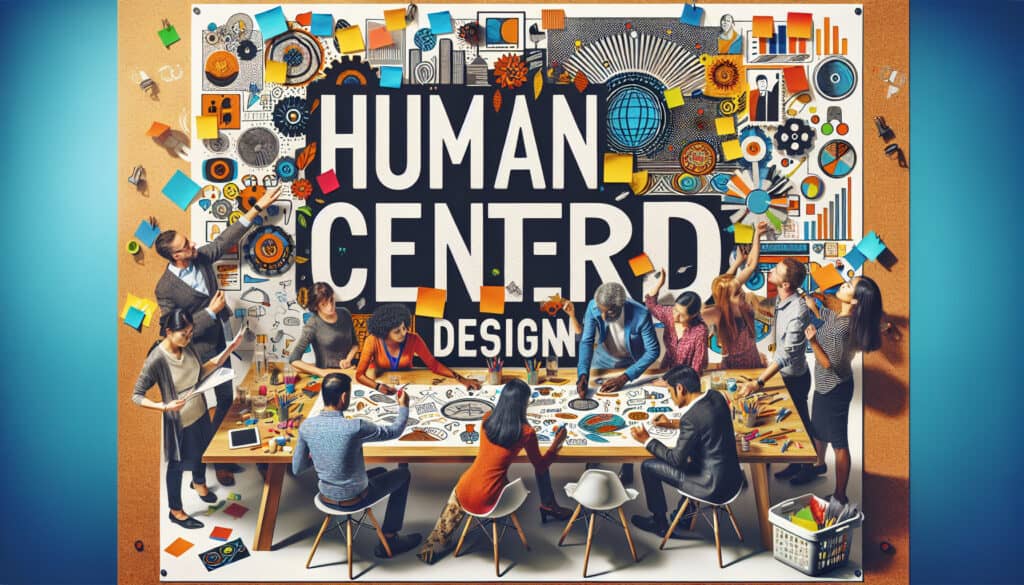To create products and services that are desirable, feasible, and viable by focusing on the needs of the user.
- Metodologías: Clientes y marketing, Economía, Lean Sigma, Fabricación, Gestión de proyectos, Calidad
Diseño centrado en el ser humano

Diseño centrado en el ser humano
- Pensamiento de diseño, Diseño centrado en el ser humano, Ideación, Diseño de interacción, Creación de prototipos, Usabilidad, Pruebas de usabilidad, Experiencia de usuario (UX), Interfaz de usuario (UI)
Objetivo:
Cómo se utiliza:
- An iterative design process that starts with understanding the needs of the user and then develops solutions to meet those needs. It involves empathy, ideation, prototyping, and testing to create products that are not only functional but also enjoyable to use.
Ventajas
- Leads to more successful and user-friendly products; Fosters empathy and a deep understanding of the user.
Contras
- Can be time-consuming and require a significant amount of user research; May be difficult to balance user needs with business goals.
Categorías:
- Ideación, Diseño de producto
Ideal para:
- Developing innovative products and services that truly meet the needs of the target audience.
Human-Centered Design is frequently utilized across various industries, including consumer electronics, automotive, healthcare, and educational tools, as it actively engages end-users throughout the design process. Its application is particularly valuable during the early phases of product development, where user research and contextual inquiries reveal specific challenges that users face, allowing designers to understand user pain points and aspirations. Participants in this methodology typically include cross-functional teams composed of designers, engineers, product managers, and end-users, fostering collaboration that enriches the ideation stage with diverse perspectives. This iterative cycle of prototyping and testing emphasizes feedback collection at multiple stages, ensuring that the solutions not only address user needs effectively but also provide a smooth and gratifying experience. Industries such as healthcare have adopted Human-Centered Design to create medical devices that enhance patient usability, while tech companies use it to develop intuitive software interfaces. The encouragement of iterative testing can lead to innovations that are both tailored and relevant, providing a competitive advantage to organizations committed to placing users at the forefront of their development processes. Engaging with stakeholders and users during this exploration enables the identification of unforeseen opportunities for innovation, ultimately refining products and services that resonate well with intended audiences.
Pasos clave de esta metodología
- Conduct user research to understand needs and pain points.
- Define the core problems to address based on user findings.
- Ideate multiple concepts that address the defined problems.
- Create low-fidelity prototypes to visualize concepts.
- Test prototypes with users to gather feedback and observe usage.
- Refine solutions based on user feedback and testing results.
- Develop high-fidelity prototypes for advanced testing.
- Conduct further tests to validate final design with users.
- Implement design revisions before production.
- Iterate the design process as needed based on ongoing user feedback.
Consejos profesionales
- Utilize immersive techniques like shadowing or diary studies to uncover hidden user pain points and motivations.
- Employ co-creation workshops that comprometer users and stakeholders in the design process, enhancing idea generation and validation.
- Implement rapid iteration cycles with integrated feedback loops to refine prototypes and elevate user interaction quality based on direct input.
Leer y comparar varias metodologías, recomendamos el
> Amplio repositorio de metodologías <
junto con otras más de 400 metodologías.
Sus comentarios sobre esta metodología o información adicional son bienvenidos en la dirección sección de comentarios ↓ , así como cualquier idea o enlace relacionado con la ingeniería.
Contexto histórico
1986
(si se desconoce la fecha o no es relevante, por ejemplo "mecánica de fluidos", se ofrece una estimación redondeada de su notable aparición)

Publicaciones relacionadas
Cuestionarios sobre molestias musculoesqueléticas
Pruebas multivariantes (MVT)
Análisis de regresión múltiple
Sistemas de captura de movimiento
Método MoSCoW
Prueba de la mediana de Mood